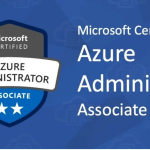Course Overview
This training course aims to equip trainees with essential and advanced skills for using Microsoft Office applications efficiently. It covers the three core programs: Word for word processing, Excel for data analysis and spreadsheet management, and PowerPoint for creating professional presentations.
Whether you are a student, employee, entrepreneur, or even a beginner in the world of computing, this course will help you enhance your productivity, organize your daily tasks effectively, and present your work professionally—contributing significantly to your academic and career success.
Course Outline (20 Modules)
- Introduction to Microsoft Office Suite
– Overview of core applications and their practical benefits in everyday work. - Navigating the Microsoft Word Interface
– Toolbars, tabs, and using pre-designed document templates. - Creating and Formatting Text Documents in Word
– Formatting fonts, paragraphs, spacing, and alignment. - Working with Tables, Lists, and Images in Word
– Inserting tables, bulleted and numbered lists, and handling images and objects. - Headers, Footers, and Navigating Long Documents
– Adding headers, footers, page numbers, tables of contents, and internal hyperlinks. - Reviewing and Collaborating in Word
– Spell check, comments, suggested edits, and document protection. - Introduction to Microsoft Excel and Its Interface
– Understanding cells, rows, columns, and toolbars. - Entering Data and Formatting Tables in Excel
– Formatting cells, borders, colors, and number/date formats. - Basic Functions in Excel
– SUM, AVERAGE, COUNT, MAX, MIN, and more. - Logical and Conditional Functions
– IF, AND, OR, and their applications in decision-making within spreadsheets. - Relative and Absolute Cell References
– Differences between them and their use in complex formulas. - Sorting and Filtering Data
– Organizing data based on specific criteria to facilitate analysis. - Charts and Visual Illustrations in Excel
– Creating and customizing various chart types. - Introduction to Microsoft PowerPoint
– Understanding the presentation interface and core elements. - Designing Professional Slides
– Using templates, backgrounds, and compelling visual formatting. - Inserting Multimedia in PowerPoint
– Adding images, videos, audio effects, and animations. - Animations and Slide Transitions
– Enhancing presentation flow with appropriate effects. - Delivering Professional Presentations
– Presenter view, presentation timers, and speaker notes. - Integration Across Office Applications
– Linking Excel tables into Word and PowerPoint, and sharing content across applications. - Tips and Best Practices for Effective Office Use
– Keyboard shortcuts, file management, and maintaining productivity.






